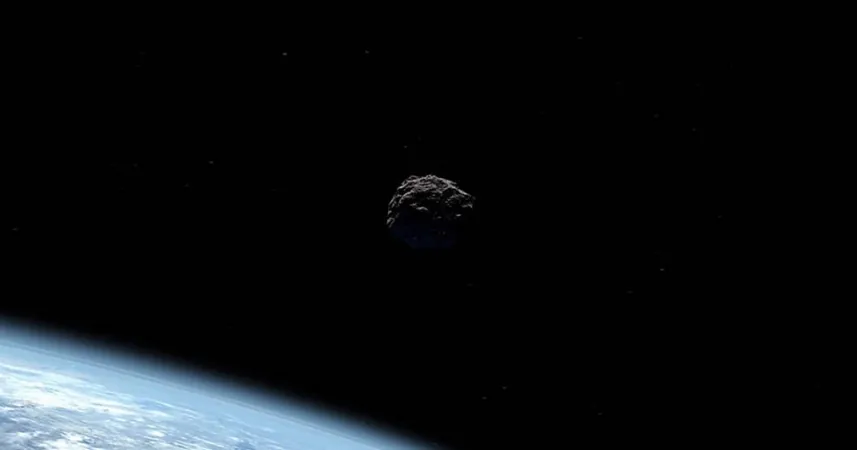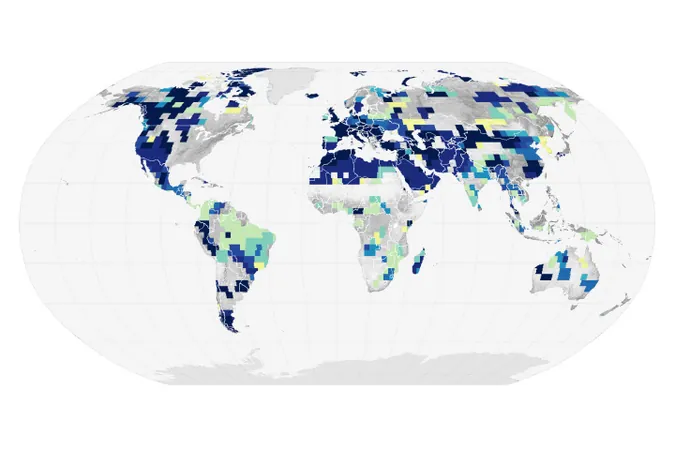
Earth Says Goodbye to Its Wandering ‘Mini Moon’ – Are We Ready for Its Departure?
2024-11-25
Author: Benjamin
Introduction
As Earth prepares to bid farewell to its temporary 'mini moon' on Monday, an intriguing celestial event is drawing attention. The asteroid, known officially as 2024 PT5, has captivated astronomers and space enthusiasts alike since it was discovered in early August by the ATLAS telescope in Sutherland, South Africa.
Characteristics of the Mini Moon
This so-called 'mini moon' is a rather petite rock, measuring approximately 10 meters (33 feet) across, and it has been orbiting Earth for the last couple of months. Unlike the moon, which holds a permanent place in our skies, 2024 PT5 is merely a transient visitor, making it a fascinating subject for scientists who study near-Earth objects.
Orbital Distance and Safety
Notably, this asteroid has maintained an orbital distance from Earth that is about nine times greater than the distance to our moon, and it has posed no danger to life on our planet. NASA’s Center for Near Earth Object Studies (CNEOS) has speculated that 2024 PT5 might be a remnant from the moon, potentially a fragment ejected from its surface during ancient impacts that affected our lunar neighbor.
Departure and Gravitational Influences
As we approach the asteroid's departure on November 25, the interplay of gravitational influences from Earth, the moon, and the sun will pull 2024 PT5 back into its original orbit around the sun. This exit marks a pivotal moment for astronomy enthusiasts, who relish such opportunities to observe and learn from celestial bodies passing through our orbital neighborhood.
Expert Insight
Professor Carlos de la Fuente Marcos, who was involved in the asteroid’s discovery, likened the relationship between 2024 PT5 and Earth to that of a casual shopper; “You may say that if a true satellite is like a customer buying goods inside a store, objects like 2024 PT5 are window shoppers,” he explained.
Future Approaches
After this brief interlude in Earth's gravitational embrace, 2024 PT5 won’t return until a close approach next January, and it will remain absent until 2055 before reappearing in 2084. This underscores the fleeting nature of such celestial encounters, raising questions about what other hidden treasures the cosmos may hold in store for us.
Conclusion
So, as we prepare to wave goodbye to our mini moon, let’s take a moment to reflect on the wonders of the universe and the marvels of space exploration that lie ahead. Stay tuned, as the cosmos continues to thrill us with its mysteries!









 Brasil (PT)
Brasil (PT)
 Canada (EN)
Canada (EN)
 Chile (ES)
Chile (ES)
 España (ES)
España (ES)
 France (FR)
France (FR)
 Hong Kong (EN)
Hong Kong (EN)
 Italia (IT)
Italia (IT)
 日本 (JA)
日本 (JA)
 Magyarország (HU)
Magyarország (HU)
 Norge (NO)
Norge (NO)
 Polska (PL)
Polska (PL)
 Schweiz (DE)
Schweiz (DE)
 Singapore (EN)
Singapore (EN)
 Sverige (SV)
Sverige (SV)
 Suomi (FI)
Suomi (FI)
 Türkiye (TR)
Türkiye (TR)